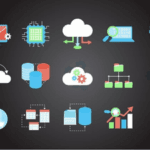As the end of the year approaches it is time to complete next year’s I.T. budget.
It seems most companies are spending more and more every year on their I.T. budget’s, but they often forget how much time and money can be saved when businesses invest in the correct technological solutions for streamlining business operations and providing tools to save employees time.
We know it can be overwhelming, so we decided to break it down and give you a template for creating an effective, reliable I.T. budget.
Who, When and How to Start Planning Your I.T Budget
Successful planning of a reliable I.T. budget should start long before your I.T. budget is “due”.
However, it’s never too late to get started!
It’s important to include the senior leaders of each department to make sure you have accounted for all operational demands. Keep in mind it’s also important to address any technological obstacles that could be costing your employees time.
Once you have identified your I.T needs by the leaders of all departments, it’s time to sit down with your in-house and/or your external I.T. consultants and map out what you would like to accomplish through technology in the next year, and come up with solution for moving forward over the next three years.
Now it’s time to get down to business and list the line details of your I.T support, infrastructure, software, backup and security.
So, let’s get organized!
Breaking Down Your I.T. Budget
Realistic I.T. budgets account for business growth, maintenance, hardware, software, support contracts and even downtime.
Start with your I.T. budget from last year and make improvements; the resulting budget should guide your technology spending and serve as a technology roadmap for your organization.
The following categories are items you may need to consider adding to your budget:
- Support/Maintenance
Costs related to the support and maintenance of your I.T. environment including both your network and infrastructure. These are the ongoing expenses required to maintain your current environment and provide helpdesk and user support. For most organizations, this includes the following:
- Salaries and benefits for support staff
- Monthly support costs from external entities
- Annual support for hardware/software vendors you are required to be current with
- Staff training and education
- Telecom expenses such as your ISP and phone service
- Hardware
This category includes all your current equipment costs. Hopefully you have a lifecycle management plan in place and are following it. If not, then you need to account for replacement of old hardware and any expansion needs the business has. The hardware category in your I.T. budget should include the following:
- Computers
- Laptops
- Servers
- Firewalls
- Routers
- Switches
- Cabling
- Warranties
- Licenses
- Renewals
- Deployment costs for new purchases
- Software
This category includes staying current with your deployed software plus any new purchases or implementations planned for the following year. The software category in your I.T. budget should include costs for the following:
- Server Software
- Laptop Software
- Desktop Software
- Antivirus
- Anti-Spam
- Backup Software
- Licenses
- Renewals
- New Purchases
- New Licenses
- Routine Software Implementation
- Cloud Services
This category includes any cloud services currently in place or planned for deployment. It could include items such as:
- Office 365 or a similar hosted email solution
- SalesForce, SugarCRM or any other similar hosted solution
- Licensed applications sold on a cloud model such as Adobe Creative Cloud or an antivirus solution such as Sophos Central
- A hosted line of business application such as Quickbooks Online or other applications specific to your industry
- Backup, Disaster Recovery, and Business Continuity
This category includes all costs related to backing up and securing your data, making sure it is always available when you need it and recovering from unexpected disasters. This is all about keeping the business up and running. Costs associated with this area could include:
- Software
- Hardware
- Colocation fees
- Outsourced Backup
- Licenses
- Renewals
- Deployment of a new plan
- Testing of the current plan
- Projects
This category is for any large deployments not accounted for elsewhere. In most cases, these items are not performed regularly and could include items like upgrading your server infrastructure to support a new business application or the opening of a new office. Don’t forget to include items such as:
- Project planning
- Implementation costs
- Hardware purchase
- Software purchases
- Consulting fees
- Documentation creation and updates
- Training for support staff and end users
- Potential data migration costs
- Miscellaneous
This category is your failsafe. You can never plan for everything that happens with technology. The pace of change is too fast and things fail on their own timeline, not yours. IT Solutions recommends adding an extra months’ worth of your total IT spend to allow you the flexibility and peace of mind that you are ready for what Mr. Murphy inevitably throws your way.
Final Thoughts to Keep in Mind
I.T. budgets are always a work in progress.
The more up-front planning you do, the better you are at capturing all expenditures and thinking of every little item that you will have to deal with, the less likely you are to have to tap into that rainy day fund from section 7.
Keeping expenditures balanced year to year and not having to keep going back to the well for more money that was not expected will keep your stake holders happy and reduce everyone’s stress level. Who knows, you might even be able to get to those items at the bottom of your to do list.
If you have questions, we are here to help.
We might have done this a few hundred times!





